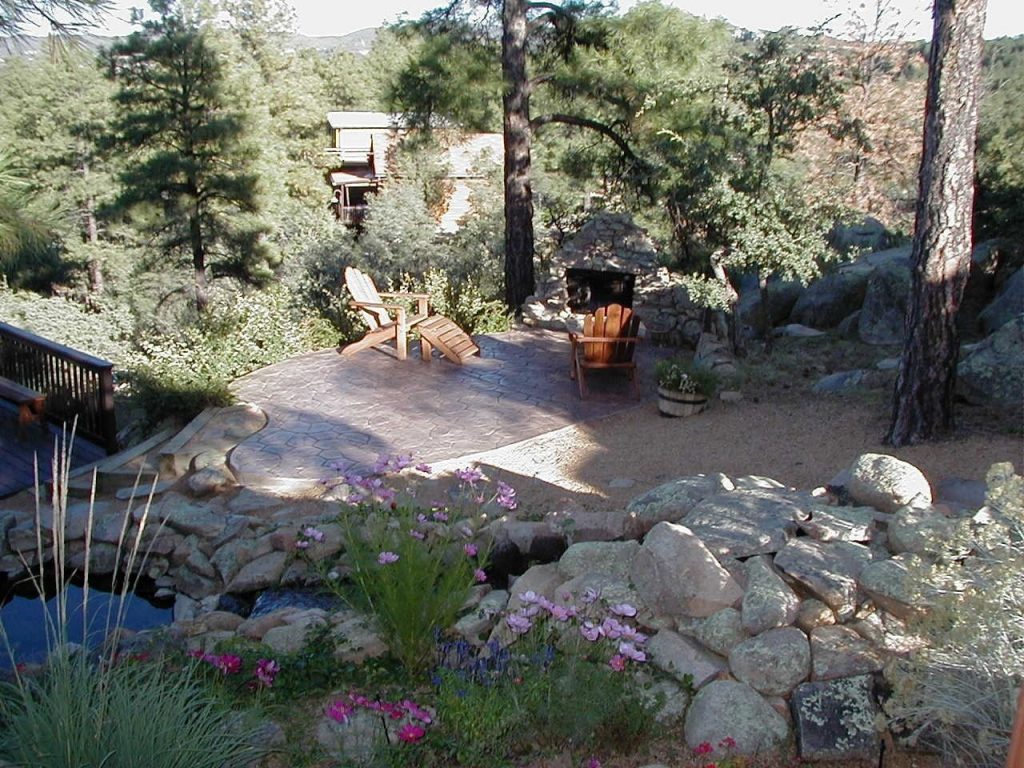The Best Strategy To Use For Hilton Head Landscapes
Table of ContentsSome Known Incorrect Statements About Hilton Head Landscapes Facts About Hilton Head Landscapes RevealedThe Facts About Hilton Head Landscapes Uncovered5 Easy Facts About Hilton Head Landscapes ShownHilton Head Landscapes for BeginnersThe Facts About Hilton Head Landscapes UncoveredOur Hilton Head Landscapes Diaries
Line produces all types and patterns and can be used in a selection of methods in the landscape. Line in the landscape is produced by the edge in between 2 materials, the overview or silhouette of a type, or a lengthy linear function. Lines are an effective device for the developer due to the fact that they can be utilized to create an infinite range of shapes and types, and they control activity of the eye and the body.

Lines can have several attributes, such as those explained below, yet they typically offer different purposes. Figure 1. Lines in the landscape - Landscaping bluffton sc. The buildings of lines figure out exactly how people respond to the landscape, both mentally and literally. Straight lines are structural and strong; they produce an official character, are typically linked with an in proportion layout, and lead the eye directly to a focal point.
The 6-Second Trick For Hilton Head Landscapes
Straight lines are usually found in hardscape edges and material. Curved lines produce an informal, natural, relaxed personality that is linked much more with nature and asymmetrical balance. Rounded lines relocate the eye at a slower rate and add mystery to the area by producing covert views. Vertical lines move the eye up, making a space really feel bigger.
Vertical lines in the landscape consist of high, narrow plant material, such as trees, or high frameworks, such as an arbor or a bird home on a pole. Horizontal lines relocate the eye along the ground airplane and can make an area really feel bigger. Low lines are much more subdued and create a sensation of remainder or repose.
More About Hilton Head Landscapes
Low lines are developed by low yard wall surfaces, sidewalks, and brief hedges. Lines are utilized to attract types on a plan. In plan sight, they define plant beds and hardscape areas. Lines are also produced by the upright forms of constructed features and plant material. There are 3 primary line kinds that create form in the landscape: bedlines, hardscape lines, and plant lines.
Bedlines connect plant product to your home and hardscape since the eye follows the line, relocating the stare through the landscape. Hardscape lines are produced by the side of the hardscape, which marks the built structure. Line can likewise be developed by lengthy and narrow materials, such as a fencing or wall surface.
Hilton Head Landscapes Fundamentals Explained
Form is found in both hardscape and plants, and it is typically the leading visual element that spatially arranges the landscape and frequently establishes the style of the yard. The kind of structures, plant beds, and garden ornaments also determines the overall kind style of the yard. Formal, geometric forms include circles, squares, and polygons.
Plants create kind in the yard with their describes or silhouettes, but form can likewise be specified by a gap or adverse space between plants - landscapers hilton head island (https://www.twitch.tv/h1tnhdlndscps/about). Circles can be cycles, or they can be split right into half circles or circle sections and integrated with lines to produce arcs and tangents
The Single Strategy To Use For Hilton Head Landscapes
Circles can also be extended right into ovals and ellipses for even more selection and passion. Circles are a solid layout kind due to the fact that the eye is always drawn to the facility, which can be utilized to highlight a prime focus or attach various other types. Figure 2. Round kinds in hardscape and grass panels.
The square kind can also be segmented and used repetitively to produce a grid pattern. Unlike circles, squares are more powerful on the edges, which can be lined up or overlapped to develop distinct patterns and more complex forms.
Twisting lines often imitate the all-natural course of rivers or streams and can be defined as smooth lines with deeply bent undulations. Meandering lines (Figure 3) function well for pathways, plant bedlines, and completely dry stream beds. Meandering lines can include passion and mystery to a yard by leading customers around edges to find new sights and rooms.
Hilton Head Landscapes Things To Know Before You Buy

Figure 5. Fragmented sides: tipping rocks in pathway. Kind is the most enduring top quality of a plant (bluffton landscaping). https://4vgontca9bh.typeform.com/to/NcH3QMx6. Usual plant types are well developed and standardized, as type is one of the most constant and identifiable attribute of plants. Kind can additionally be developed through the massing of plants, where the total mass produces a different type than an individual plant.
A highly different form has to be utilized with careone or useful content two work well as a prime focus, but a lot of develop chaos. Natural plant types, instead of over-trimmed kinds, need to establish the bulk of the composition. The relevance of general kind is essentially based on the viewing perspectivethe kind of a tree can show up quite various to a person standing under the canopy versus viewing the tree from a distance in an open field.
The 10-Minute Rule for Hilton Head Landscapes
Plant kinds additionally develop and define the void or open spaces between the plants, producing either convex or scooped types in the gaps. High-arching tree branches normally develop a concave open room under the branches, and a round canopy with reduced branches fills the space to create a convex form in the open area under the tree.
